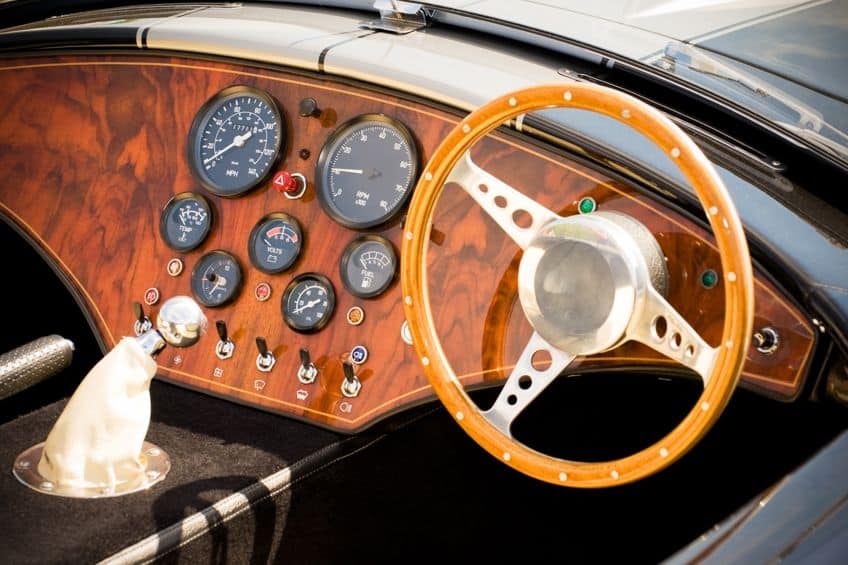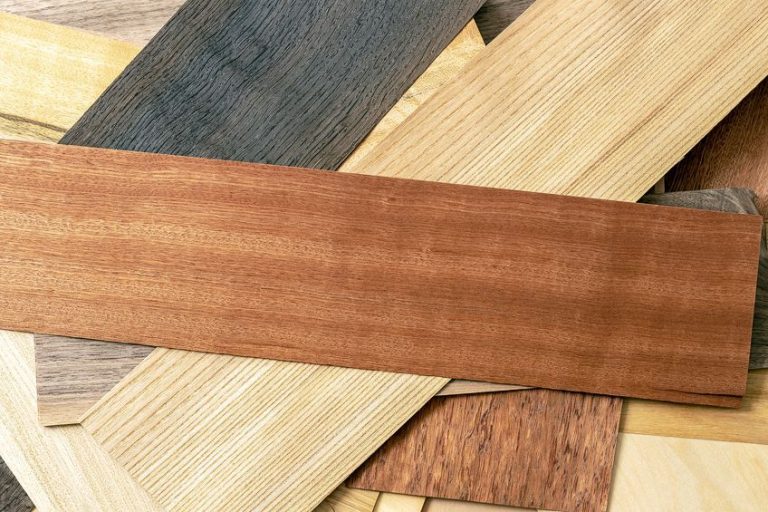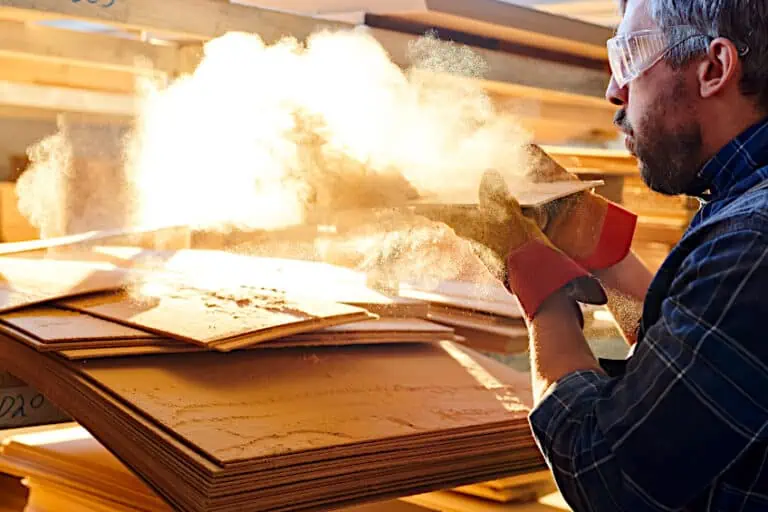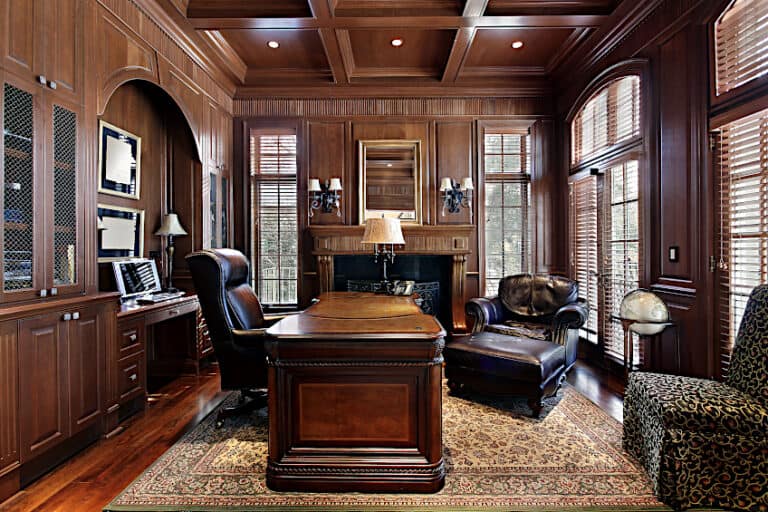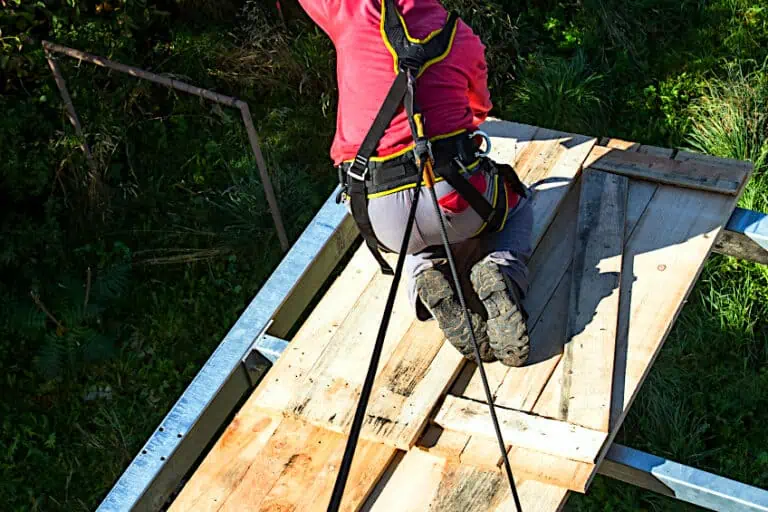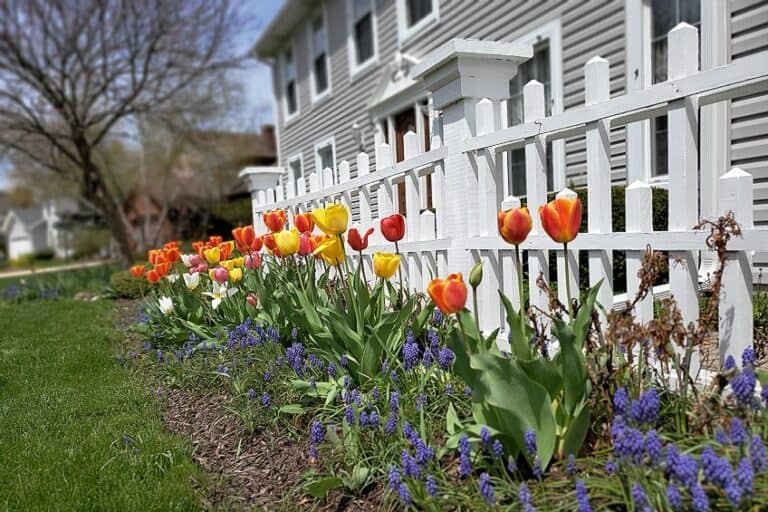What Is Veneer Wood? – Exploring the Beauty of Real Wood Veneer
There are materials that carry with them a sense of status, a sense of nobility, simply by being present in one’s home. In the past, owning furniture was considered a hobby instead of a necessity. As time progressed and the commonality of middle-class families with disposable income grew, so did the need for decently priced furniture, which meant fancy solid-wood furniture quickly became an option for those slightly better off, instead of the staple option as home supply stores. This is where veneers came into the picture, and as the new kid on the block they took the world by storm, but what is veneer wood? Let’s have a look at this question and some other helpful facts about veneer wood on the market today.
Table of Contents
What Is Veneer Wood?
What is wood veneer? Well, there are a variety of different veneers which are made of lots of different materials and are subject to different compositions based on their intended purpose, but essentially what wood veneer is, is a compilation of paper-thin pieces of wood which are bonded through a process involving chemicals and heat processing.
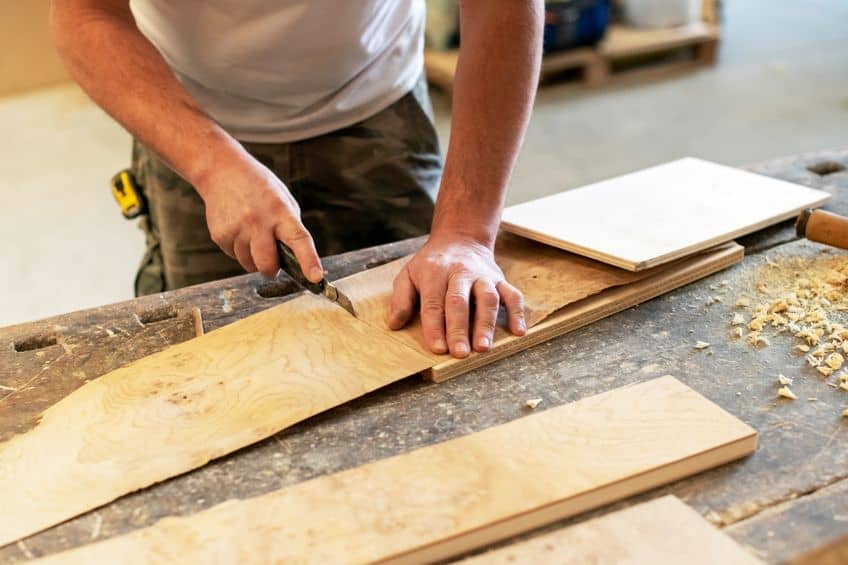
These veneers can all be from one log, or they could contain woods from a number of different trees or even synthetic materials! This means that a particular board of veneer wood can contain a few different materials and therefore can potentially possess a variety of characteristics.
If you have a board of veneer custom-made, you could ask for certain properties to be highlighted, added, or removed depending on your intended application. With veneers being this versatile and strong it is easy to understand why they are one of the most commonly used building materials on the market, but there are those that tend to turn their noses up at this miracle material.
When veneers first appeared on the market they were seen as being “fake” wood, and even though they were stronger, lasted longer, and were far cheaper than their solid wood counterparts their reputation did leave those who owned veneer furniture feeling a bit inferior.
Fortunately, in modern society, this blatant form of classism is not as prevalent, and most of us are happy to have furnishings that look as good as solid wood, last twice as long, require less maintenance, and are a fraction of the price. Another benefit of veneer wood is that you can have a high-quality finish on virtually any furnishing (even with rare woods) while improving the practicality of the given piece.
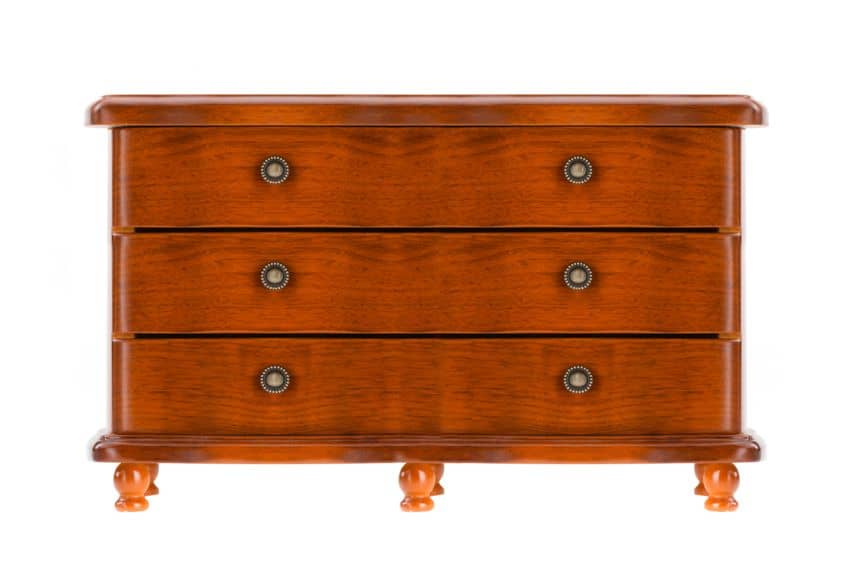
A good example is instead of having solid pine furniture in your living room, you could have an MDF piece instead, and have it covered with a pine veneer which won’t be as soft and therefore won’t damage as easily as solid pine. All of this being said, the question “what is wood veneer” can, in short, be answered by characterizing this material as a cheap, long-lasting, versatile, environmentally friendly alternative to solid wood.
What Is the Difference Between Solid Wood and Veneer Wood?
There are those that might be a bit confused about the differences between solid wood and wood veneer. This being said, the fundamental difference between these materials is alluded to in their names. Solid wood is just as its name describes, solid chunks of wood that have been turned and carved into a particular shape, these forms are completely solid and are finished through varnishing, painting, or priming on their surfaces.
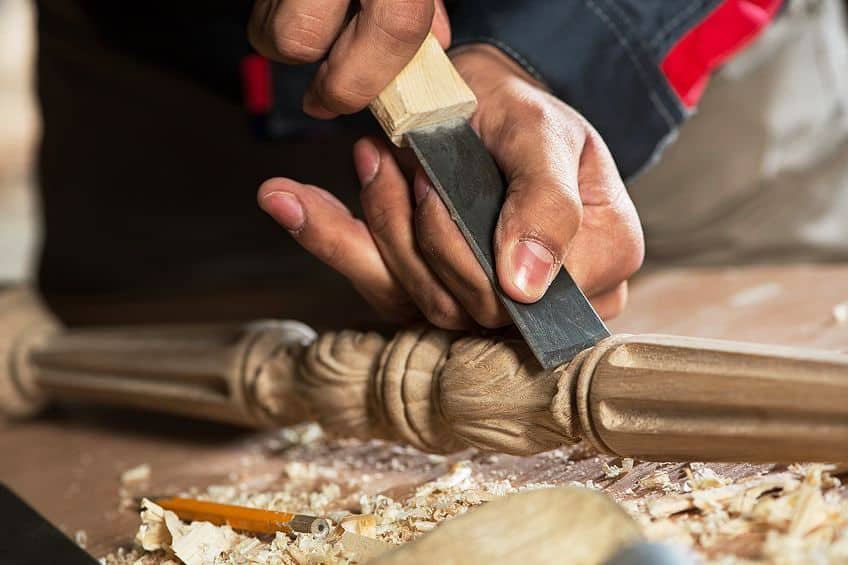
When scoring, adorning, or creating inlays in wood this is the easier of the two materials to work with as it has the density and excess material to allow these modifications, it is also easier to restore this material compared to veneers because its layers can simply be sanded away and re-finished. Restoring veneer is a bit trickier than this, you see veneers are made of layers upon layers of thin pieces of wood and/or other materials, and once the surface layer is damaged you pretty much need to replace the entire board.
This means that you will either have to replace the entire surface or you will have to have an identical board with the exact same surface veneer cut and covered to replace the damaged one.
One of the advantages that veneer wood has over solid wood is that its structure does not change as dramatically in reaction to ambient temperature changes compared to solid wood, this means that having a home with a veneered interior will result in fewer creaks and cracks in your floorboard or ceiling during those cold winter months.
Due to the fact that the properties of a wood veneer board are easily modified for a particular application, a good example is if you need a board that is rigid but still has a decent amount of flexibility but has the finish of high-quality hardwood. You could commission a board with these properties to be assembled for you, and not only would it cost a fraction of a hardwood interior, but it would likely be more effective in the given application.
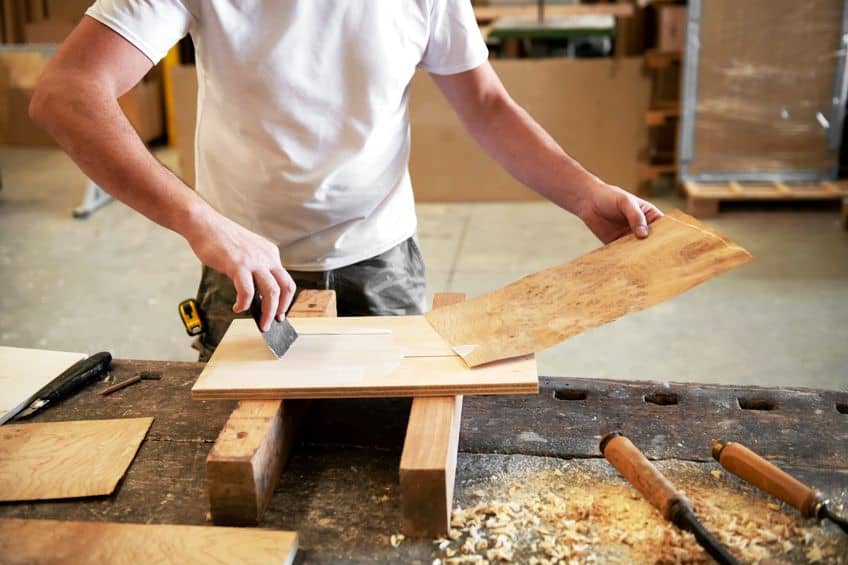
Although both kinds of wood can be treated to handle the presence of ambient or liquid moisture better, hardwood will swell and split considerably worse than veneers, not to mention that it will cost practically an arm and a leg to replace a hardwood interior or furniture.
With veneers, if the board is not properly sealed moisture can easily seep between the layers of veneer via the edges of the board, which could also result in splitting, bumbling, and the failure of the adhesive used to create the board initially. Regardless of the type of wood you choose, it is of utmost importance that you treat your board if you will be using it in a (potentially) moisture-rich environment.
Veneer Wood vs Solid Hardwood
Although there are applications for both veneer wood and solid wood, both materials have pros and cons you should consider. Besides their respective prices, it is important to note that each is better suited to certain environments and/or being worked into particular forms. This being said let’s have a look at some of the pros and cons of these materials so you can decide which suits your next project best.
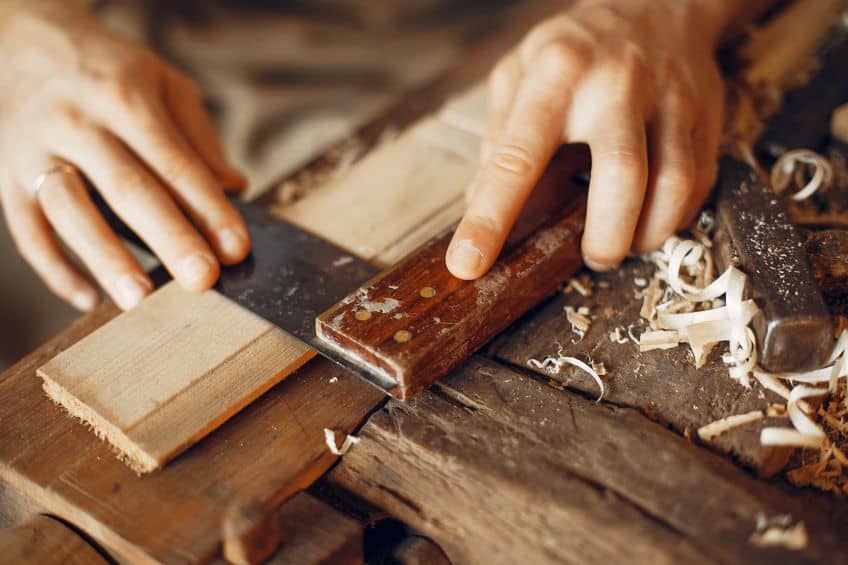
Veneer Wood
PROS
- Inexpensive
- Customizable
- Easy to replace
- Readily available
- Good finish options
- Easy to maintain
- Easy to insulate
- Easy to install
CONS
- Impossible to repair
- Potential to split
- Expensive to replace
- Lacks natural wood grain aesthetic
- Low-quality veneers are often sold as high quality
Solid Wood
PROS
- Practical
- Easy to repair
- Exposed grain is a sort after aesthetic
- Hard-wearing
- Natural density
- Easy to determine the quality
- Has a great “feel” and texture
CONS
- Does not handle moisture well
- Possibility of insect infestation
- Harder to work with
- Bad for the environment
- Expensive to replace
- Not easily recycled
- Potential to split and/or crack
What Are the Different Types of Veneers?
As we mentioned previously veneers come in different shapes and sizes. They can vary in everything from the composition of wood particles to structural integrity. There are dozens of veneers on the market today with new ones coined every day, so let’s have a look at some of the more commonly available veneers on the market today.
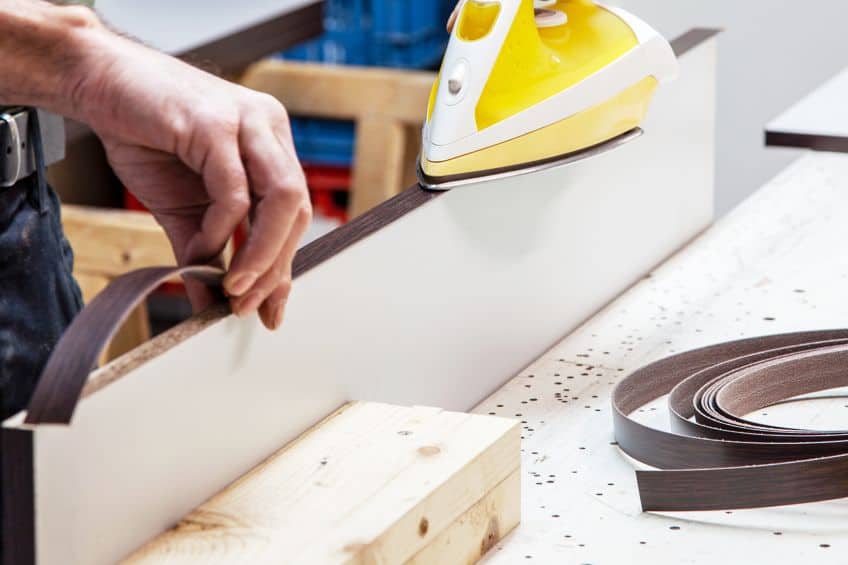
Spliced Veneer Sheets
A veneer that is manufactured using the splicing process is typically used to create veneer exteriors for large surfaces. Due to its ability to adhere to unconventional surfaces, it allows you to create unique and interesting patterns. In addition to this unique ability, it also produces less waste as fragments can be re-integrated into the creation of more of these sheets. These are one of the few coatings that many can be fooled into believing are “real wood veneers” due to the texture it produces.
This type of veneer can be found on large conference room tables as it provides a seamless aesthetic and can be customized to suit virtually any setting imaginable.
Natural Veneer Sheets
This is the kind of veneer most people would like to have as a finished surface in their homes. Why is it called natural veneer though? Well, when the wood used in the creation of this veneer is stripped from the log, its texture and grain are preserved. This means that it can be applied as a surface layer to other veneer boards, particle boards, and similar materials. One would imagine that considering the aesthetic this wood provides that it would come at a premium, but in reality, it prices somewhere between solid wood and chip/particleboard.
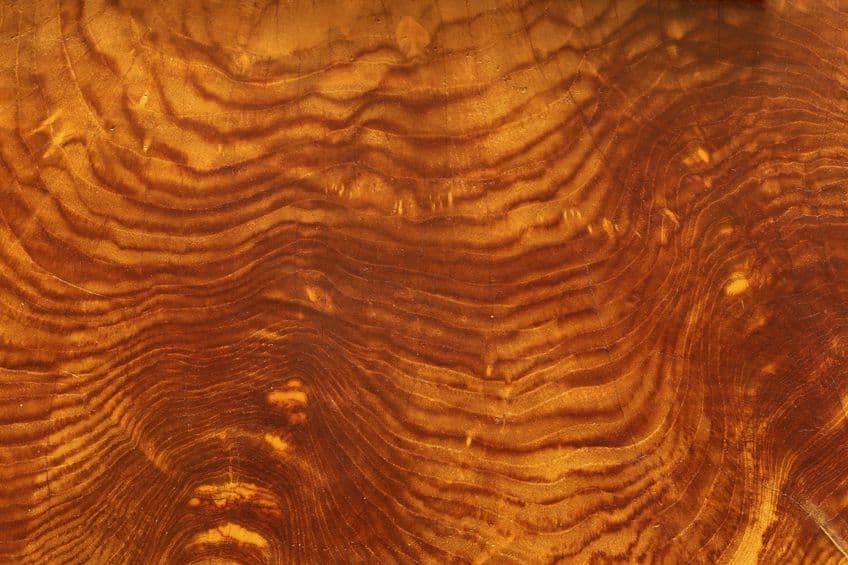
This is good news for you, as you can have a high-quality hardwood veneer finish at a fraction of the cost genuine hardwood goes for. You might also like to know that this type of hardwood veneer is really good for the environment as the amount of wastage and energy efficiency involved in the production process is extremely low compared to conventional hardwood furniture production. This is considered to be a real wood veneer.
Multi-Layer Veneer Sheets
Technology keeps moving forward, and with-it industries have found a new way to process materials that have since become stagnant in the area of aesthetic innovation. One of these materials is a multi-layered veneer, this spiraling surface layer veneer has a unique look that really sets it apart from other veneers in its class. It is made from wood fibers which are bonded using high-grade adhesive and a heat press technology, this substance is then applied to a flexible elastic base and sold as a multi-layer veneer.
Since this wood typically features geometric patterns which resemble natural wood grain it is often compared to the look of natural veneer, this being said it does add an air of class to interiors that most other veneers do not.
Fine Line Veneer Sheets
This type of veneer is a bit of a mimic in the sense that It can imitate the appearance and texture of virtually any other solid wood or veneer. This veneer is essentially made up of other veneer cut-offs that have been repurposed and adhered together to create new sheets. These sheets are then combined until their density eventually forms aboard, which can then be cut, trimmed, shaped, and finished to resemble practically any wood you can imagine.
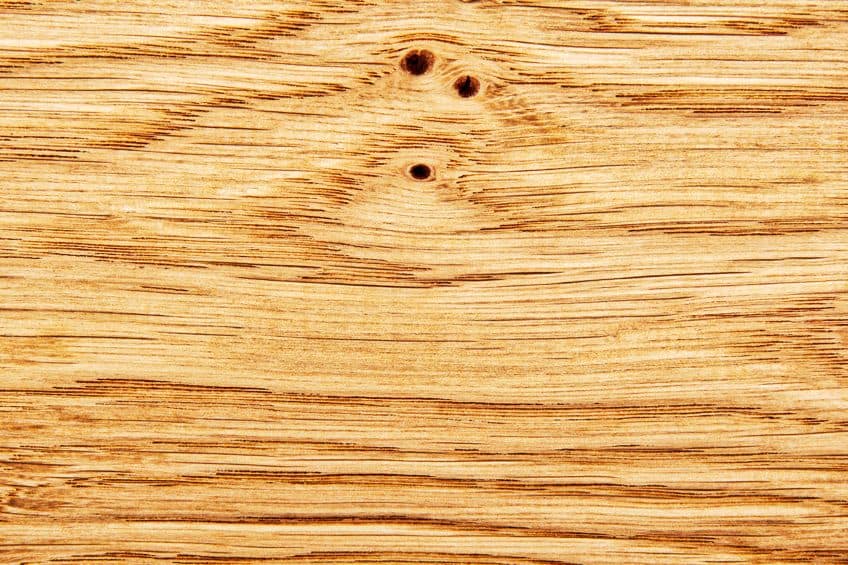
Another big selling point of this type of veneer is that it is relatively inexpensive compared to the softwood veneers that most of its materials are scavenged from, but a downside to this is that since this veneer is not applied to a solid backing like particleboard or chipboard (and is essentially hundreds of paper-thin layers of wood layered together) it does make them quite brittle. The adhesive and heat treatment process used to create these boards don’t do any favors in this regard, so you might want to avoid using this engineered wood to create things like veneer furniture.
Shop Made Veneer Sheets
Most materials have a hierarchy of quality and price which is dictated by their exclusivity or how challenging it is to manufacture or acquire them. Shop-made veneer definitely falls in this category as it is by far one of the most expensive veneers on the market today, but why is this? Well besides the fact that it is sawn with clinical precision, you likely will not find this type of veneer on a random kitchen counter. This type of veneer is exclusive because it is of such high quality that it is often used to create or finish classical musical instruments like pianos, violins, and guitars. This puts shop cut veneer in a league of its own, and its prices reflect this notion.
As we mentioned previously this veneer is typically not used to create veneer furniture, doors, or cupboards, although if you could afford the amount of shop cut veneer required to pull this off, you’d likely opt for solid hardwood instead.
Is It Possible to Stain Veneer?
This question is understandably asked a lot. The fact of the matter is that veneer, although very thin, is still very much wood. They are often referred to as engineered wood and a surprising amount of them can be stained and even varnished if you understand the technique and execution required to do so. You would essentially go about this the same way you would if you were staining a virgin board or restoring an old workpiece.
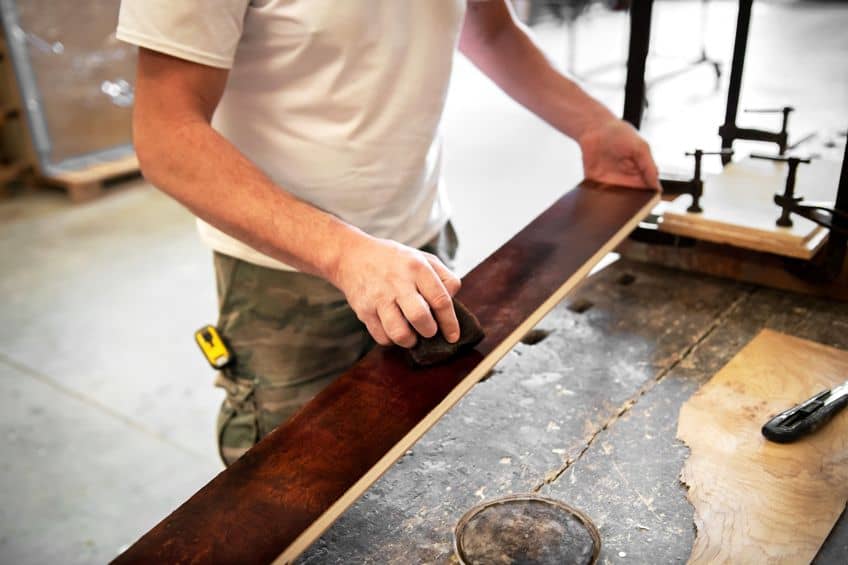
The thing that should be at the forefront of your mind during the preparation process is that you must ensure you do not send too much of the veneer finish away in an attempt to expose raw veneer. This will eat away the material you are trying to stain, this being said, try and be as conservative as possible when attempting to stain a workpiece with a veneer finish.
Lastly, since veneer is essentially layers of exposed wood, you should consider adding some sealant along any exposed edges and/or primary surface to reduce the chances of moisture warping or splitting your workpiece.
What Are Veneer Substrates?
As you know by now, veneers are essentially a thin high-quality covering that is applied to a material that would otherwise be considered cheap. This gives the overall workpiece a great aesthetic appeal at a fraction of the cost of its solid wood counterpart. This being said, what kind of materials are used as the base for workpieces with veneer finishes? Well, there are a few, and these materials that form the base of these workpieces are referred to as substrates. Below are some common substrates that veneer is used on.
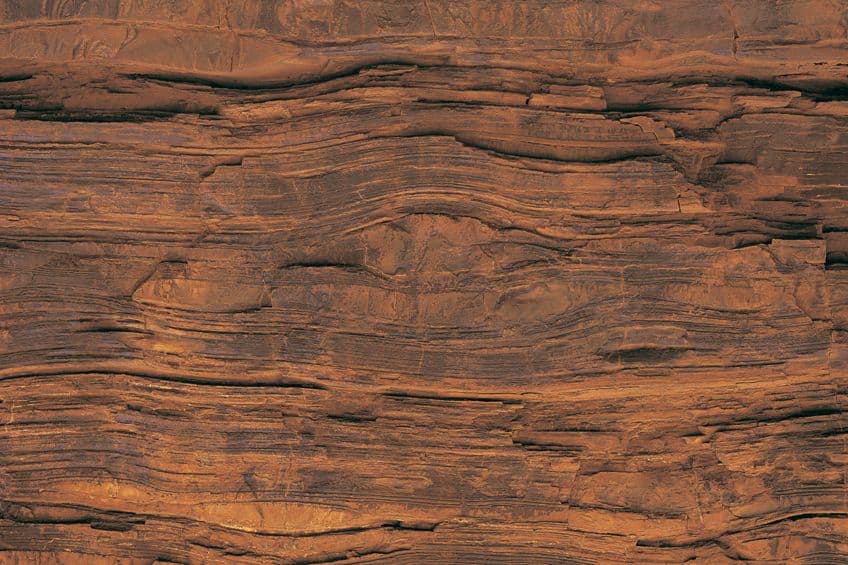
Hardwood and Softwood Substrates
That’s right! You can cover wood with other kinds of wood, and you might even own some furniture that has been constructed in this manner. Why would one do this instead of buying genuine hardwood furniture you might ask? The answer is simply that this is much cheaper, if you use a hardwood or softwood substrate it is essentially chipboard which is made of cheaper hardwood and softwood fibers which is then covered with a higher quality veneer. This composition has the added benefit of not being as susceptible to expansion and contraction the way solid wood is, while still providing you with a high-quality finish.
Adhering veneer to this type of substrate can be challenging though and requires a high strength adhesive to execute properly.
Plywood Board Substrates
Plywood is one of the most popular construction materials on the market today, and not just in the US. This is one of the most versatile construction materials on the market due to its potential tensile strength, pliability, ease of use, and price. Plywood makes a great substrate for veneer most of the time, the only problem being that if poor-quality plywood is used as a substrate for high-quality veneer the results can be disastrous.
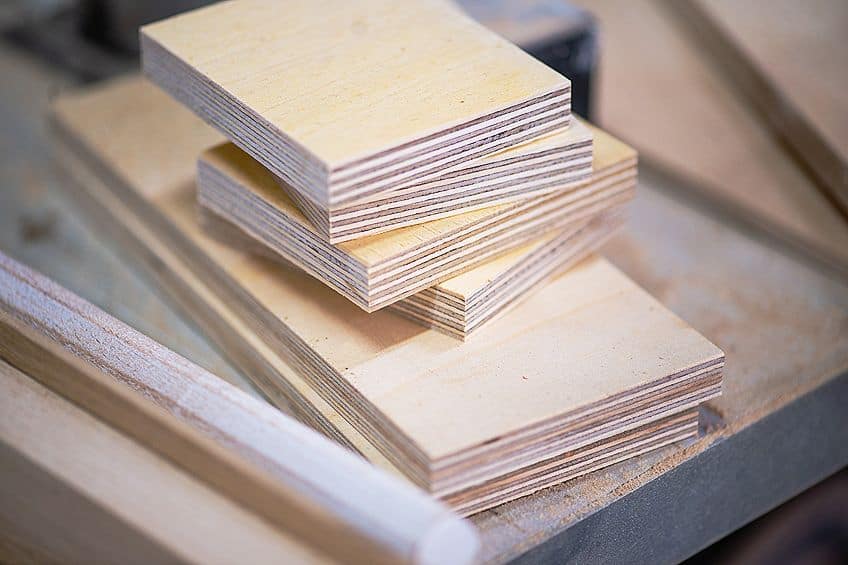
Plywood is made of various wood fibers which are mixed together with high-quality adhesive and formed into plywood boards. These boards can be joined together in various compositions and shapes, which is what gives them their strength. If a poor-quality plywood board is used (meaning sub-par adhesive was used in the production process) your veneer could possibly peel and tear away from this substrate, damaging it irreversibly.
Medium Density Fibreboard/ Medium Density Overlay Substrate
This I one of the few types that are almost universally regarded as being a good substrate for a veneer. MDF can be characterized as a mix of various high-quality woods and particles which are chosen to give it certain properties. These particles are joined together with high-quality adhesives and resin which ensure that the backing is decently weighted, this is why veneered MDF can be found in most reasonably priced furniture.
Veneered MDF creates high-quality long-lasting workpieces that have an incredible finish, but these won’t come at a premium as one might expect, in fact, MDF furniture is one of the best-selling types of furniture on the market today.
The production of these products does require the use of formaldehyde which can be toxic to humans, but there are MDF manufacturers who produce these types of furnishings without the use of formaldehyde, this being said you have the option of choosing between the two.
Metallic Substrate
Covering metal in veneer was not a popular practice until fairly recently, but it is possible and is becoming more commonplace in recent times. The trouble with adhering veneer to metal is that metal typically has little to no surface friction available for adhesion to take place, therefore sticking your veneer to the metal substrate directly is not recommended.
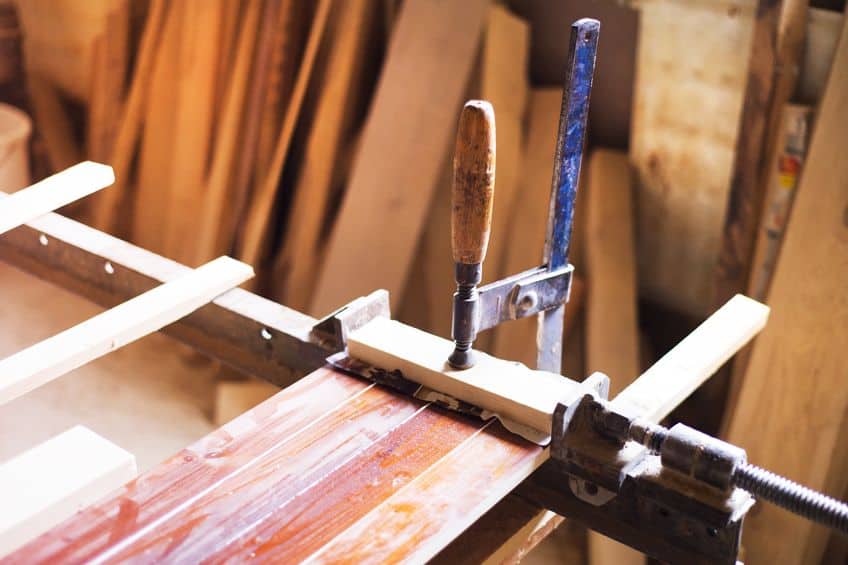
A way to work around this is to use some other veneer as backing for your surface layer, you do this by sticking your “base coat” of veneer to your metal substrate using polyurethane (PU) adhesive and allowing it to dry for the manufacturer’s recommended time period. Once the adhesive has cured you can apply your chosen veneer to the backer. Pay attention to the type of adhesive you use as it is a good conductor of both heat and cold, so if your intended application will be exposing your workpiece to either of these forces ensure that your adhesive is up to the challenge.
Now that you know what veneer is, some of the variations available, and how they can adhere to various surfaces it’s time for you to go out there and put your newfound knowledge to the test. Remember to consider what application you will be using any given veneer in, and consider which adhesive works best for each substrate. Always work in well-ventilated areas and most importantly, safety first!
Frequently Asked Questions
How Do You Clean Veneer Surfaces?
If you are looking to clean veneer without ruining your finish the best option is regular maintenance. Most people own a veneer table, so scuff marks and cup stains are quite common. To clean your veneer table, ensure that you dust it off well beforehand. Once you are sure your surface is clear of dust you can use ammonia-free glass cleaner to wipe off said stains, this also helps restore and maintain some of the veneer’s sheen finish.
What Is Acacia Veneer?
What is acacia veneer? This type of veneer is taken from an acacia tree. The veneer is characterized as having a dark brown almost red hue to it, making it extremely popular and sought after for furniture and countertop finishes. The grain of this wood is somewhat unusual as it curves and produces waves as per the natural grain of its tree.
What Are Oak Veneers?
What are oak veneers? Oak veneers are a rather high-quality veneer made by thinly slicing oak lumber. This veneer finish is commonly used on MDF boards as the weight and structure this material provides compliments the deep sturdy aesthetic provided by the oak veneers. There are other veneers that look strikingly close to oak veneers, but once side by side oak tends to look ever so slightly different due to the way it is cut.

I have been into woodworking since 2005 and woodturning since 2011. Because of my love for wood and woodworking, I started woodhappen.com to teach other enthusiasts about how to finish and seal wood, the best woodworking tools, the different types of wood, and everything else related to woodworking! Read more about me here.

